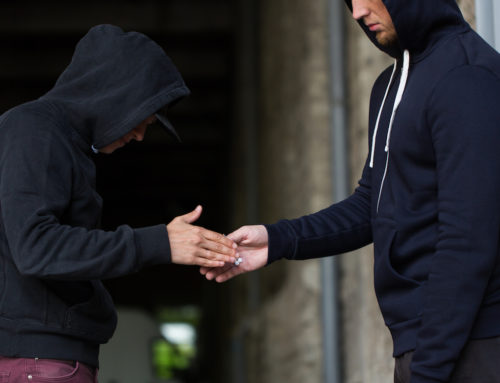 Criminal torture charges in California carry stiff penalties including prison time. In a rather bizarre case, a Court in Czechoslovakia has ruled that a 35-year-old man can be extradited to the United States to face charges of abducting, torturing and cutting off the penis of a California owner of a medical marijuana dispensary. (See http://www.reuters.com/article/2014/03/05/us-czech-usa-extradition-idUSBREA2423220140305.) If convicted of the crime of Torture in California, a person may face a life sentence so it is important to hire an experienced criminal defense attorney in California whether your case is in Los Angeles, Orange, Riverside or any other county in the golden state. Because the crime of torture in California is new in that Penal Code section 206 became law in 1990, prosecutors have not charged all cases as torture even know the facts may warrant such a charge. As discussed below, an experienced criminal defense attorney, with knowledge of the law of torture in California, can successfully defend a case by obtaining a dismissal or not guilty verdict or a reduction in charges by properly challenging a prosecutor’s torture case which often times does not truly meet the evidentiary standard required under California Penal Code section 206.
Criminal torture charges in California carry stiff penalties including prison time. In a rather bizarre case, a Court in Czechoslovakia has ruled that a 35-year-old man can be extradited to the United States to face charges of abducting, torturing and cutting off the penis of a California owner of a medical marijuana dispensary. (See http://www.reuters.com/article/2014/03/05/us-czech-usa-extradition-idUSBREA2423220140305.) If convicted of the crime of Torture in California, a person may face a life sentence so it is important to hire an experienced criminal defense attorney in California whether your case is in Los Angeles, Orange, Riverside or any other county in the golden state. Because the crime of torture in California is new in that Penal Code section 206 became law in 1990, prosecutors have not charged all cases as torture even know the facts may warrant such a charge. As discussed below, an experienced criminal defense attorney, with knowledge of the law of torture in California, can successfully defend a case by obtaining a dismissal or not guilty verdict or a reduction in charges by properly challenging a prosecutor’s torture case which often times does not truly meet the evidentiary standard required under California Penal Code section 206.
1. California Cases Defining “Torture” Under Penal Code section 206
As explained in detail in People v. Jung (1999) 71 Cal.App.4th 1036, 1046 (Armstrong, J., dissenting) and summarized herein, torture is a rather new crime in California, created on June 5, 1990 when the California electorate passed Proposition 115 in response to the facts in Peoplev. Singleton (1980) 112 Cal.App.3d 418. (See Review of Selected Cal.2 Legis. — Prop. 115: The Crime Victims Justice Reform Act, 22 Pacific Law J. 1010,1012.)
Penal Code section 206 defines torture as follows: “Every person who, with the intent to cause cruel or extreme pain and suffering for the purpose of revenge, extortion, persuasion, or for any sadistic purpose, inflicts great bodily injury as defined in Section 12022.7 upon the person of another, is guilty of torture. The crime of torture does not require any proof that the victim suffered pain.”
In People v. Barrera (1993) 14 Cal.App.4th 1555, the Court of Appeal considered a constitutional challenge to Penal Code section 206 on the grounds that it was vague and overbroad. The Court noted that the statute enjoys “presumptive validity” and “is sufficiently certain if it employs words of long usage or with a common law meaning ‘notwithstanding an element of degree in the definition as to which estimates might differ.'” The court in People v. Barrera concluded that “‘Torture’ has a long-standing, Judicially recognized meaning.” Quoting the California Supreme Court in People v. Tubby (1949) 34 Cal.2d 72, the Barrera Court continued: “‘Torture has been defined as the “Act or process of inflicting severe pain, esp. as a punishment in order to extort confession, or in revenge.” (Webster’s New Int. Dict. (2d ed.).)'”(Peoplev. Barrera, supra, 14 Cal.App.4th 1563.) The dictionary definition was appropriately enlarged upon by this court in its original opinion in Peoplev. Heslen, 163 P.2d 21, 27 in the following words: “Implicit in that definition is the requirement of an intent to cause pain and suffering in addition to death. That is, the killer is not satisfied with killing alone. He wishes to punish, execute vengeance on, or extort something from his victim, and in the course, or as the result of inflicting pain and suffering, the victim dies. That intent may be manifested by the nature of the acts and circumstances surrounding the homicide.”
“‘In determining whether the murder was perpetrated by means of torture the solution must rest upon whether the assailant’s intent was to cause cruel suffering on the part of the object of the attack, either for the purpose of revenge, extortion, persuasion, or to satisfy some other untoward propensity. The test cannot be whether the victim merely suffered severe pain since presumably in most murders severe pain precedes death.’ (People v. Tubby (1949) 34 Cal.2d 72, 76-77.)” (People v. Barrera, supra, 14 Cal.App.4th at pp. 1563-1564.) The BarreraCourt concluded: “Torture combines a specific state of mind with a particular type of violent conduct causing significant personal injury. . . . As written, section 206 continues the Tubby definition.” (Id. at p.1564.)
In order to secure a conviction for the offense of torture, a prosecutor is required to prove that the defendant intended to cause cruel or extreme pain and suffering. As explained in by the California Supreme Court in People v. Mincey (1992) 2 Cal.4th 408, 433,”A defendant’s state of mind must, in the absence of the defendant’s own statements, be established by the circumstances surrounding the commission of the offense. The condition of the victim’s body may establish circumstantial evidence of the requisite intent. ‘In determining whether a murder was committed with that intent
Thus, for example, in People v. Healy (1993) 14 Cal.App.4th 1137, the defendant’s torture conviction was upheld based on the following conduct: “Over a period of approximately two weeks Healy battered Laura L. daily. He split her lips, broke her ribs, and stomped on her. He struck her in the jaw, back, arms, neck repeatedly. He flung her in the air so that she landed on the back of her head on the floor. She sustained a fractured jaw, ankle fractures, multiple rib fractures and bruises to her face and torso.” Moreover, the severity of the victim’s injuries was not the only evidence presented of the defendant’s intent to inflict cruel or severe pain. The defendant also told the victim that “she never had any real hardship in her life, she was wasting potential because of it, she needed someone to help her to realize her potential, he knew how she could ‘speed up the process,’ and that ‘he needed to create some hardship’ to get her to listen to him.” On those facts, the court found that there was ample evidence of the defendant’s intent to inflict extreme and prolonged pain.
In affirming a conviction for first degree torture murder in People v. Mincey, supra, 2 Cal.4th 408, the California Supreme Court ruled that the element of intent to cause cruel pain and suffering can be inferred solely from the condition of the victim’s body provided that the wounds are sufficiently egregious to support the inference. The evidence there showed that the defendant beat the five-year-old victim repeatedly over a period of 24 to 48 hours, resulting in hundreds of injuries, including stoppage of the intestinal tract and swelling of the brain. While many of the injuries could have been caused by a hand hitting the victim, certain of them could only have been caused by a hard object, such as a board recovered from the scene. The doctor who conducted the autopsy testified that the victim experienced prolonged pain before his death.
In People v. Raley (1992) 2 Cal.4th 870, the defendant locked two teenage girls in a basement safe, beat them with a club, stabbed them repeatedly, bound them, put them in the trunk of his car where they remained overnight, and threw them down a ravine. One victim died, having suffered 41 stabs wounds and a fractured skull. The other survived; she had been stabbed 35 times, had a punctured abdomen, lacerations to the head, chest and thighs, and contusions to the head.
In People v. Jenkins (1994) 29 Cal.App.4th 287, the defendant was convicted, among other things, of torture of a cohabitant. Over a period of six months, the defendant had beaten the victim on the chest, arms, legs and face with a variety of objects, including an iron pipe, a hammer, a screwdriver, a .357 magnum and a brick. Among the victim’s injuries were a collapsed lung, three to eight fractured ribs, a broken nose, swelling in both legs, puncture wounds on her legs, infections at the sites of the puncture wounds caused by the hammer and screwdriver, and scars on her face, chest and legs.
In People v. Proctor (1992) 4 Cal.4th499, our Supreme Court found the following evidence sufficient to sustain a finding of torture murder: “In the present case, the victim was subjected to strangulation by two different methods, her wrists were bound so tightly as to cut into her skin, she was beaten in the face severely enough to have caused her eyes to be swollen shut and her lips to be swollen, she received severe blows to other parts of her body, and she suffered repeated, incision-type stab wounds to her neck, chest, and breast area.” These latter wounds were described as “a number of shallow stab wounds and incisions caused by dragging a weapon across the skin in the area of the neck. The curvature of some of the injuries indicated they had been inflicted slowly and deliberately.” Indeed, the coroner who conducted the victim’s autopsy testified that these wounds were inflicted for the purpose of causing pain or fear.
The Court in Jung explained that “In each of the foregoing cases, the defendant’s intention to inflict cruel or extreme pain could be inferred from the circumstances of the case, including the nature, extent and severity of the wounds suffered by the victim. And in each case, the victim, if he or she survived the assault at all, suffered substantial, debilitating injuries: broken bones, punctured internal organs, multiple stab wounds and gunshot wounds.”
2. Hold the Prosecutor to Its Burden of Proof
As explained above, it is the People’s burden to establish that the defendant intended to inflict cruel and extreme pain. Such a standard must be challenged by an experienced criminal defense lawyer. In addition, there can be a fine line between what appears to be a torture case as opposed to a simple assault and battery. However, the sentence for felony Torture as opposed to assault and battery can be very different leading to a life prison term. Accordingly, if you are arrested for Torture or any other similar violent felony in California, you should immediately consult with an experienced criminal defense attorney who is aware of the history of torture cases in California since 1990 and how to defend such a case.





